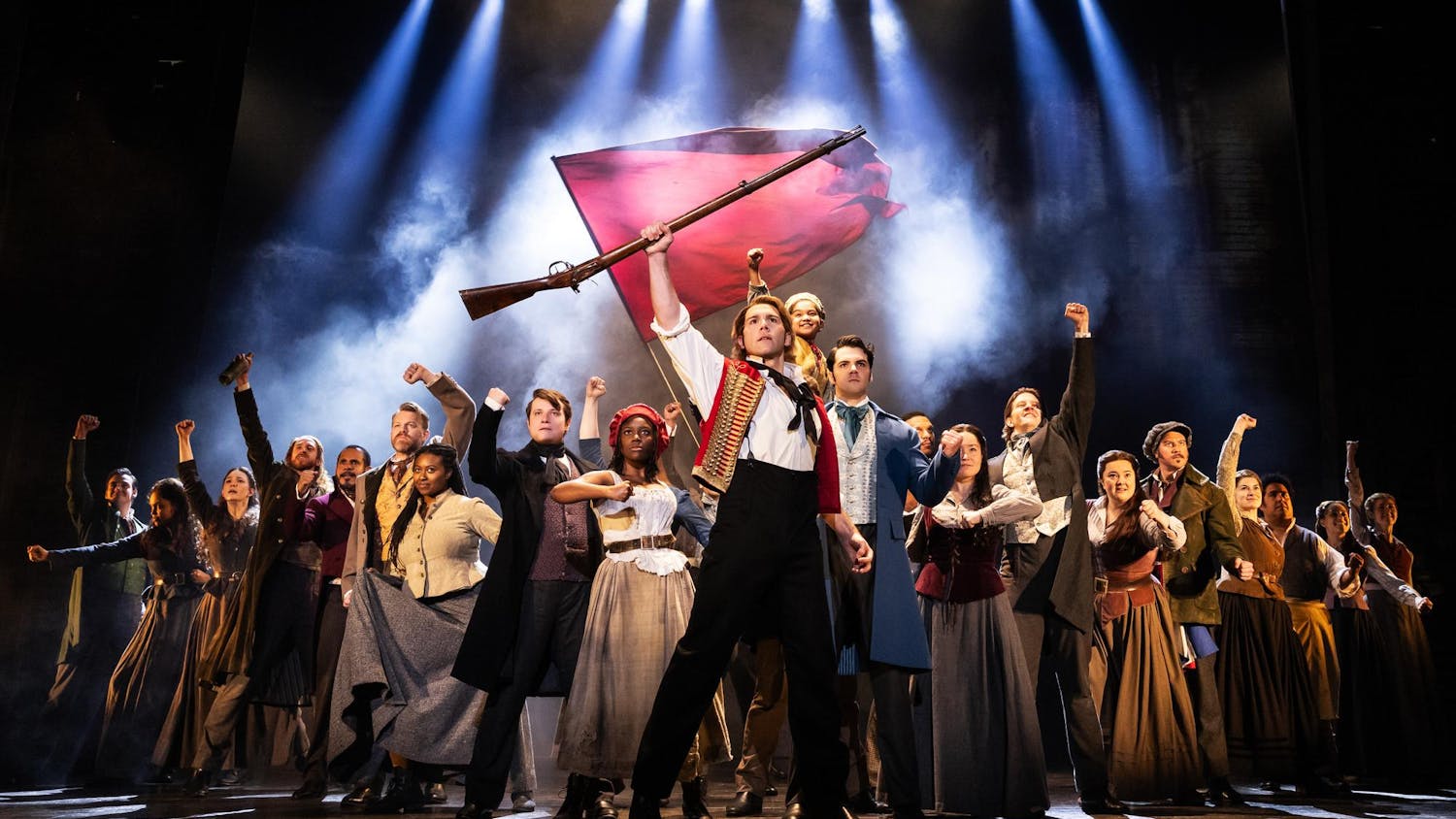by Greg Brav
gbrav@indiana.edu
The 10th Kinsey Institute Juried Art Show concluded its two-month exhibition Saturday. The nearly 100 pieces featured have been collected and shipped back to artists from around the country. The Kinsey Institute for Research in Sex, Gender and Reproduction has also received donations from the show’s artists — one example being Dean Adams’ “Perch.”
The entries to this year’s show were selected from more than nine hundred applicants. At the opening reception in May, three pieces of the 96 selected to appear in the exhibit received special awards.
“Best in Show” was given to the best piece chosen by a panel of five jurors. “Gallery Visitors’ Choice” was awarded to the selection most favored by visitors to the opening reception, and “Curators’ Choice” was determined by the Kinsey Institute curatorial staff.
The show was formerly the Kinsey Institute Juried Erotic Art Show, but after two years the decision was made to drop “erotic” from the title.
“It didn’t make sense to limit submissions to erotic art,” Catherine Johnson-Roehr, curator at the Kinsey Institute, said.
The show was formerly held in the Kinsey Institute, but it was moved to the Grunwald Gallery of Art as it has grown in profile.
Johnson-Roehr said she feels there may be another change in the works if the show is held again next year.
Visitors to the exhibition were advised by a sign upon entering that sexual situations are depicted in many of the artworks.
Anyone 18 or older could submit a piece that “explores sex, gender, sexuality, eroticism, reproduction, romantic relationships, the politics of sex and gender or the human figure,” according to the show’s submission webpage.
Local artist Melanie Pennington’s “Untitled” was awarded the “Gallery Visitors’ Choice.” Her work was interactive in that a sign next to the piece said sitting on the phallus-shaped wood carving was not prohibited.
The styles of art were widely varied, with artists using photography, embroidery, silicone on paper and video. Often an artist used multiple forms of media for the same piece.
Bloomington resident Aric Verrastro entered a series of three “neckpieces,” which imbue the look of football pads with femininity.
Verrastro said he wanted to “make the viewer aware that we all have masculine and feminine traits,” according to Verrastro’s artist statement from the Kinsey Institute Juried Art Show webpage.
Verrastro’s set of three pads are also an example of an artist using multiple pieces to contribute to their theme. His inclusion of different “neckpieces” can be related to home and away jerseys worn by football players.
Another artist whose work gained additional poignancy from use of variations on a theme was Michael Farrell. His “Expecting Sarah Louise” offered more depth with its four photographs than only one would have offered.
The four photographs he submitted were from a series of more than 50 images developed from seven photographs taken of his subject Sarah Louise.
In the first photograph, with the subject’s hands folded across her chest and her posture leaning forward, it is unclear whether she is expecting a child or assuming a pose of general expectation.
The next photographs in the series make it more evident she is expecting a child, and her expressive poses in these photographs — turned right with arms stretched toward her temples, seated against a stool in another — are vivid depictions of an expectant mother.
“Illusions of the Body” by Gracie Hagen also used multiple images to facilitate a thematic cohesiveness. Hagen’s series showed the same model posing twice to highlight subjectivity in appearances and how much an individual can use facial expression and posture to alter their looks.
Hagen made the series “to tackle the norms of what we think our bodies are supposed to look like,” according to her artist statement.
“Self Portrait with J.” by Jennifer Hart was honored with the “Best in Show” award. It depicts an overt sexual situation prominently on a quilt with smaller, traditional square patches around it.
“The representations of sexuality in my work open up a dialogue for people to ask themselves about the nature of pornography, the nature of quilting/fiber art and the nature of beauty.
“By questioning each of these things and creating dialogue surrounding them, I think my work leads to an exploration of three things that are generally hidden from public dialogue,” Hard said in an e-mail.






